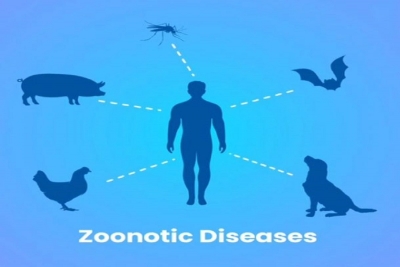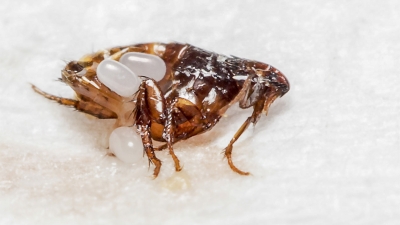
Do you know what's common among SARS-CoV-2, HIV AIDS, Ebola, SARS, MERS, Nipah, H1N1 flu (swine flu) and H5N1 flu (bird flu)? Yes, all of these are zoonoses, that is, they are animal-bome diseases.
A zoonosis is any disease or infection that is naturally transmissible from vertebrate animals to humans. Zoonoses have different modes of transmission. In direct zoonosis, the disease is transmitted from animals to humans through air, bites or saliva. In indirect zoonoses, the transmission occurs via an intermediate species (referred to as a vector), which carries the disease pathogen. These pathogens can be viruses, bacteria, fungi or parasites.
Though the world has seen the emergence of diseases throughout history, in the last 50 years, a host of new infectious diseases has spread rapidly after making the evolutionary jump from animals to humans. According to the World Health Organisation (WHO), 70% of emerging human pathogens come from animals. In the last century, at least 10 infectious diseases jumped from animals to humans, it says.
What has led to this?
Globalisation, deforestation, encroachment of wild environments, human-animal conflicts and wildlife trade have led to the spike in zoonosis outbreak, says a report by the WHO, released in September 2019. It has also warned that the risk of a global pandemic is growing and that zoonotic diseases will continue to emerge and re-emerge.
The deadly ones
As the world grapples with the new coronavirus, which is thought to have spread from bats, let's take a look at some of the major zoonotic diseases and their outbreaks...
Bubonic plague
Bubonic plague was the cause of the Black Death that swept through Asia, Europe and Africa in the 14th Century and killed an estimated 50 million people. It took centuries for some societies to recover. Plague is a bacterial disease caused by Yersinia pestis. It is carried by rodents and cats. The infection in humans is caused by the bite of an infected flea.
HIV-AIDS
HIV, the virus that causes AIDS, originated from chimps and other primates and is thought to have first infected humans at least a century ago. However, it was first recognised only in 1981. By the end of that year, there were 270 reported cases and 121 deaths. HIV destroys the immune system, opening the door to a host of deadly infections. The virus has now mutated to a separate human-only disease. Between 1981 and 2018, the disease caused an estimated 32 million deaths worldwide.
SARS An epidemic of SARS, caused by a strain of coronavirus SARSCOV, affected 26 countries and resulted in more than 8,000 cases in 2003.
SARS-CoV is thought to have spread from bats, which, in tumn, spread to other animals (civet cats) and perhaps first infected humans in southern China in 2002.
Ebola
The 2014-2016 outbreak in West Africa was the largest Ebola outbreak since the virus was first discovered in 1976. The outbreak started in Guinea and then spread to other parts of the continent. The virus is transmitted to people from wild animals (such as chimpanzees, gorillas, monkeys, antelopes or porcupines). Human-to-human transmission happens through direct or indirect contact with the blood or bodily fluids of infected people. It is thought that fruit bats of the Pteropodidae family are natural Ebola virus hosts.
Nipah
Nipah virus (Niv) infection severely affects both animals and humans. The natural host of the virus are fruit bats. It can spread from bats to other animals to people or directly from bat to and between people. Even eating a fruit bitten by an infected bat can transfer Nipah to humans. The disease was first identified in 1998 during an outbreak in Malaysia, India has reported three NiV outbreaks in the past. The first two were in West Bengal: Siliguri in 2001 and Nadia in 2007. The third outbreak occurred in Kerala in May 2018.
Picture Credit : Google










